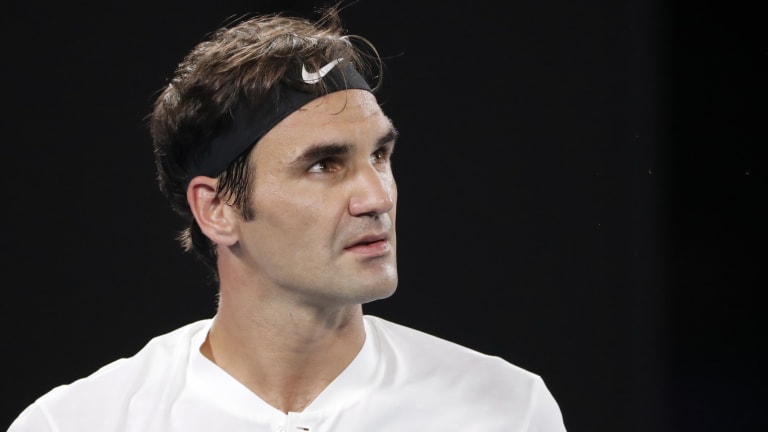But those were the only similarities between the two scenes. This time, despite being 36 instead of 27, Federer held off a surging, younger opponent rather than succumbing to one. This time, instead of losing belief, and control of his shots, down the stretch, he found both. This time, instead of letting the other guy run away with the fifth set 6-2, he was the one who kicked into overdrive and won it, 6-1.
“Vintage Federer” is the term we always hear on nights like this, nights when he wins 15 of the first 18 points, when he smacks 24 aces, when he uses his artful variety to undermine a more powerful, more one-dimensional opponent. But this Federer is not like the Federer of his mid-20s prime in at least one very important regard: he’s a better, more stubborn competitor now than he was then.
Federer’s 6-2, 6-7 (4), 6-3, 3-6, 6-1 win over Cilic reminded me not so much of his loss to Nadal at the 2009 Australian Open, but of his loss in another five-set Grand Slam final the same year, to Juan Martin del Potro at the U.S. Open.
In both matches, Federer won the first set routinely, before backing off just enough to allow his opponent to sneak through the second in a tiebreaker. In both matches, Federer won the third set and looked sure to win the title in the fourth, before faltering again. In both matches, as the fifth set began, Federer’s opponent had built up a head of steam and was dominating the rallies with rockets from the back of the court. And in both matches, Federer began to take out his frustration on the officials at hand: In New York, he aimed his wrath at chair umpire Jake Garner (who also worked this final); last night in Melbourne, Federer muttered a sarcastic “Nice call, buddy,” to a line judge who had robbed him of a potential winner.
Then came the difference in the two finals. In 2009, Federer couldn’t find an answer to Del Potro’s power and lost the fifth set going away, 6-2. This time, Federer clenched his first, stepped forward in the court, and found a way to stem the Cilic tide.

